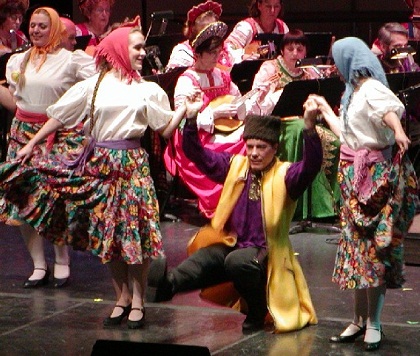
With Ivan the Terrible, a Tsar known for his severe character and love of art, it became common to have at court, jesters, singers, players, and
dancers.
In Soviet times, after the 1917 revolution, the Bolshevik government began to allocate funds for the organization and dissemination of professional folk dance companies. In 1937 the first professional popular dance collective made its appearance under the direction of Igor Moiseyev.
Among the numerous companies there is another group: Barynia, whose virtuosity has reached the point that when artists go on stage, they do not
they know exactly what they will interpret, the artistic result is always a spontaneous improvisation. (They are very famous abroad).
The development of Russian dance evolved in three directions:
- The corros (jorovody) that are very varied. It is the combination of movements of a large number of participants with a song and sometimes with
the role-playing of the content of the music.
- The improvised dances, depending on the number of participants, the dance can be individual, in pairs or in groups. These dances
they are generally learned from childhood.
- Traditional dances, unlike popular dances, these have a certain order of different figures and in each figure the movements are pre-established. The most widespread are: kadril, metaliza, valenki, balalaika, sibisrkaya, polka etc.